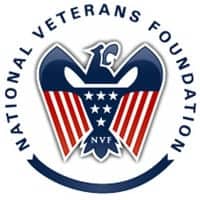The life of a US armed service member Veteran isn't necessarily an easy one. Veterans and their families face unique challenges. For many Veterans, the US Department of Veterans Affairs (VA) is there to provide the support they may need.
One of the ways that the VA provides this much-needed support is through a benefits program known as VA Aid and Attendance.
What is VA Aid and Attendance?
VA Aid and Attendance is a monthly pension benefit that provides tax-free payments to Veterans who served during wartime. In addition to being available for Veterans, single surviving spouses and dependent children are also eligible for this benefit.
To qualify for this pension, the Veteran or their surviving family must meet means-tested income and asset thresholds.
Aid and Attendance provides tax-free payments to Veterans who qualify for this pension.
VA Aid and Attendance: Not Well-Known and Sometimes Confusing
VA Aid and Attendance is a lesser-known benefit. Aid and Attendance is a bit of a misnomer when it comes to this pension benefit; the term itself is a medical rating that allows for additional allowances in the event that the Veteran or surviving family member is housebound and/or needs the regular aid and attendance of another person.
Even more confusing is the fact that Aid and Attendance allowances aren't exclusive. They're available to Veterans with service-connected disabilities and to their spouses.
Surviving spouses already receiving Dependency and Indemnity Compensation are also eligible to receive Aid and Attendance allowances.
Believe it or not, there are close to 16 different levels of allowances for Veterans and or their surviving spouses, and these levels are both service-connected and non-service-connected.
What You Can Receive with VA Aid and Attendance
Income payments made to Aid and Attendance recipients can vary greatly. In 2020, monthly payments started at $768 and ended at $2,266, depending on the type of claim and the type of medical rating the applicant meets. Generally, income payments depend on the type of claim and the medical rating involved.
Many people don't even know of the existence of this benefit. VA does not advertise some of its benefits very well and as such many eligible people never apply.
Eligibility Requirements: Wartime Service
First and foremost, a Veteran must have served in active duty for a minimum of 90 days. At least one of those days must have been during a period of war. Veterans also need to have been granted either an honorable discharge or one that's classified as other than dishonorable.
A Veteran need not to have served in a combat role in order to be eligible. The VA defines “period of war” the following way:
- World War II: December 7, 1941 – December 31, 1946
- Korean Conflict: June 27, 1950 – January 31, 1955
- Vietnam Era: August 5, 1964 – May 7, 1975; for Veterans serving “in country” before that starting date, the period is extended to February 28, 1961 – May 7, 1975
- Gulf War: August 2, 1990 – a set date to be determined by Presidential Proclamation or federal law
Gulf War Veterans are a special case, as the conflict as of 2021 is still ongoing. Service requirements for these Veterans is either 24 months or the completion of their active-duty requirement, whichever is met first. If the Veteran is deceased, surviving family members are eligible if the Veteran met those same requirements prior to their death.
Other Requirements
There are other requirements to be eligible for the Aid and Allowance pension besides simply serving during wartime. Veterans under the age of 65 must be totally disabled to qualify, and applications for Aid and Allowance need to be accompanied by medical evidence to that effect.
Single surviving spouses do not have to meet these requirements, of course, and neither does the deceased Veteran prior to their death, regardless of their age at the time. A surviving spouse does need to have been married to the Veteran at the time of their death, must be single while applying, and must not have remarried after November 1, 1990.
It’s almost a foregone conclusion that a Veteran or their surviving spouse will not receive Aid and Attendance without a medical need for assistance or supervision as a result of disability.
This is where the medical ratings of “housebound” or “aid and attendance” come into play. Either one of these medical ratings adds additional allowances on top of basic benefits
Income and Asset Limits
Final requirements for qualifying for VA Aid and Allowance include income limits. A Veteran’s household income, or that of their spouse, has to be below the Maximum Allowable Pension Rate (MAPR) as defined by the VA. These are variable, according to your circumstances; for example, a disabled Veteran without any dependents that also meets the “aid and attendance” medical rating can earn as much as $22,939 a year under the 2019-20 MAPR. Rates change all the time, however, so this figure may not always be accurate.
Meanwhile, VA Aid and Allowance pensions also have an asset limit. The 2019-20 net worth limit is $129,094, though this limit is increased by a percentage every year that coincides with Social Security’s annual COLA increase. As far as the VA is concerned, a Veteran’s “new worth” is the entirety of a Veteran’s assets plus what the VA calls “income for VA purposes” (IVAP). This includes the income of spouses or dependent children in specific circumstances. However, this asset test excludes a personal residence sitting on a property of up to 2 acres, personal property, and personal-use automobiles.
Navigating Aid and Attendance Applications
Applying for the VA Aid and Attendance pension program is a complex endeavor, one that might be difficult for you to attempt alone. Turn to the National Veterans Foundation today and we’ll help guide you. Because here at the NVF, no one gets left behind.
SHARE THIS!


